
Scandinavia is a subregion of Northern Europe, with strong historical, cultural, and linguistic ties between its constituent peoples. Scandinavia most commonly refers to Denmark, Norway, and Sweden. It can sometimes also refer to the Scandinavian Peninsula. In English usage, Scandinavia is sometimes used as a synonym for Nordic countries. Iceland and the Faroe Islands are sometimes included in Scandinavia for their ethnolinguistic relations with Sweden, Norway and Denmark. While Finland differs from other Nordic countries in this respect, some authors call it Scandinavian due to its economic and cultural similarities.
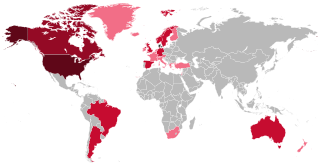
Danes, or Danish people, are an ethnic group and nationality native to Denmark and a modern nation identified with the country of Denmark. This connection may be ancestral, legal, historical, or cultural.
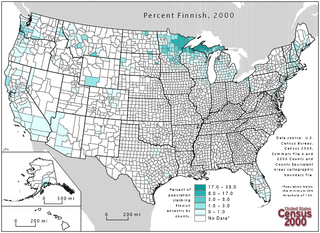
Finnish Americans comprise Americans with ancestral roots in Finland, or Finnish people who immigrated to and reside in the United States. The Finnish-American population is around 650,000. Many Finnish people historically immigrated to the Upper Peninsula of Michigan and the Iron Range of northern Minnesota to work in the mining industry; much of the population in these regions is of Finnish descent.
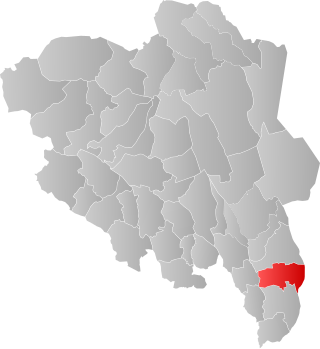
Finnskogen is an area of Norway and Sweden situated in the counties of Innlandet and Värmland respectively, so named because of immigration of Finnish people in the 17th century, the so-called Skogfinner/"Forest Finns".

Swedish Americans are Americans of Swedish descent. The history of Swedish Americans dates back to the early colonial times, with notable migration waves occurring in the 19th and early 20th centuries and approximately 1.2 million arriving between 1865–1915. These immigrants settled predominantly in the Midwest, particularly in states like Minnesota, Illinois, and Wisconsin, in similarity with other Nordic and Scandinavian Americans. Populations also grew in the Pacific Northwest in the states of Oregon and Washington at the turn of the twentieth century.
Nordic and Scandinavian Americans are Americans of Scandinavian and/or Nordic ancestry, including Danish Americans, Faroese Americans, Finnish Americans, Greenlandic Americans, Icelandic Americans, Norwegian Americans, and Swedish Americans. Also included are persons who reported 'Scandinavian' ancestry on their census. According to 2021 census estimates, there are approximately 9,365,489 people of Scandinavian ancestry in the United States.
Nordic colonialism is a subdivision within broader colonial studies that discusses the role of Nordic nations in achieving economic benefits from outside of their own cultural sphere. The field ranges from studying the Sámi in relation to the Norwegian, Swedish and Finnish states, to activities of the Danish Colonial Empire and Swedish Empire in Africa, New Sweden, and on Caribbean islands such as St. Thomas and Saint-Barthélemy.

Swedish is the official language of Sweden and is spoken by the vast majority of the 10.23 million inhabitants of the country. It is a North Germanic language and quite similar to its sister Scandinavian languages, Danish and Norwegian, with which it maintains partial mutual intelligibility and forms a dialect continuum. A number of regional Swedish dialects are spoken across the country. In total, more than 200 languages are estimated to be spoken across the country, including regional languages, indigenous Sámi languages, and immigrant languages.

Forest Finns were Finnish migrants from Savonia and Northern Tavastia in Finland who settled in forest areas of Sweden proper and Norway during the late 16th and early-to-mid-17th centuries, and traditionally pursued slash-and-burn agriculture, a method used for turning forests into farmlands. By the late 18th century, the Forest Finns had become largely assimilated into the Swedish and Norwegian cultures, and their language, a variety of Savonian Finnish, is today extinct, although it survived among a tiny minority until the 20th century. Descendants of the Forest Finns still live in Sweden and Norway.
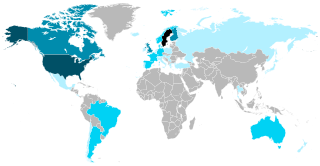
The Swedish diaspora consists of emigrants and their descendants, especially those that maintain some of the customs of their Swedish culture. Notable Swedish communities exist in the United States, Argentina, Australia, Canada, New Zealand, Brazil, and the United Kingdom as well as others.
Nordic Brazilians refers to Brazilians of full or partial Nordic ancestry, or Nordic-born people residing in Brazil.
Foreign support in the Winter War consisted of materiel, men and moral support to the Finnish struggle against the Soviet Union in the Winter War. World opinion at large supported the Finnish cause. The Second World War had not yet begun in earnest and was known to the public as the Phoney War; at that time, the Winter War saw the only real fighting in Europe besides the German and Soviet invasion of Poland, and thus held major world interest. The Soviet aggression was generally deemed unjustified. Various foreign organizations sent material aid, such as medical supplies. Finnish immigrants in the United States and Canada returned home, and many volunteers traveled to Finland to join Finland's forces: 8,700 Swedes, 1,010 Danes, about 1,000 Estonians, 725 Norwegians, 372 Ingrians, 366 Hungarians, 346 Finnish expatriates, 4 Latvians, 2 Lithuanians and 190 volunteers of other nationalities made it to Finland before the war was over.

For a number of decades after its establishment in August 1901, the Socialist Party of America produced or inspired a vast array of newspapers and magazines in an array different languages. This list of the Non-English press of the Socialist Party of America provides basic information on each title, along with links to pages dealing with specific publications in greater depth.

Swedes, or Swedish people, are an ethnic group native to Sweden, who share a common ancestry, culture, history and language. They mostly inhabit Sweden and the other Nordic countries, in particular Finland where they are an officially recognized minority,[d] with Swedish being one of the official languages of the country, and with a substantial diaspora in other countries, especially the United States.
The Nordic diaspora may refer to:
North Germanic peoples, Nordic peoples and in a medieval context Norsemen, were a Germanic linguistic group originating from the Scandinavian Peninsula. They are identified by their cultural similarities, common ancestry and common use of the Proto-Norse language from around 200 AD, a language that around 800 AD became the Old Norse language, which in turn later became the North Germanic languages of today.
Finnish Argentines are Argentine citizens of full, partial, or predominantly Finnish ancestry, or Finnish-born people residing in Argentina.
Estonian Argentines are Argentine citizens of Estonian descent or Estonia-born people who emigrated to Argentina. Argentina is home to the fourth largest Estonian community in the Americas, behind the United States, Canada and Brazil.
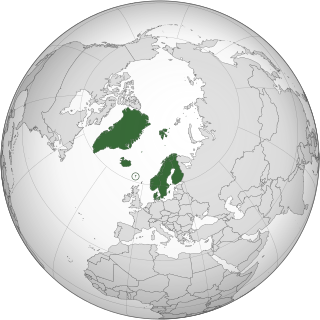
Nordic immigration to North America encompasses the movement of people from the Nordic countries of Sweden, Denmark, Norway, Iceland, and Finland to the North America, mainly the United States and Canada, from the 17th to the 20th centuries. These immigrants were drawn to the New World by factors ranging from economic opportunities to religious freedom and challenges in their native lands. Their legacy has significantly shaped the cultural, social, and economic landscape of the Americas.

Alku and Alku Toinen are apartment buildings built in 1916 by the Finnish American immigrant community in the Sunset Park neighborhood of Brooklyn, New York City. Located at 816–826 43rd Street, they were the first nonprofit housing cooperatives in New York City.















